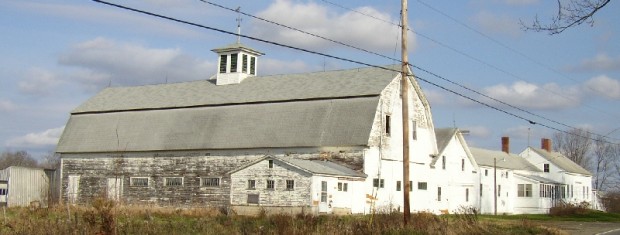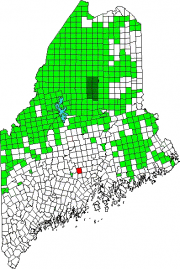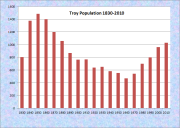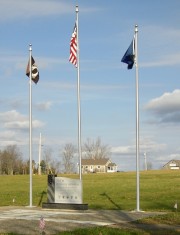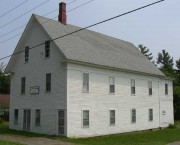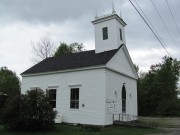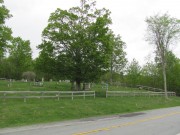| Year | Population |
|---|---|
| 1970 | 543 |
| 1980 | 701 |
| 1990 | 802 |
| 2000 | 963 |
| 2010 | 1,030 |
| Geographic Data | |
|---|---|
| N. Latitude | 44:40:30 |
| W. Longitude | 69:15:18 |
| Maine House | District 99 |
| Maine Senate | District 11 |
| Congress | District 2 |
| Area sq. mi. | (total) 35.5 |
| Area sq. mi. | (land) 34.8 |
| Population/sq.mi. | (land) 29.6 |
County: Waldo
Total=land+water; Land=land only |
|
[TROY] is a town in Waldo County, settled in about 1801, it was incorporated on February 22, 1812 from Bridge’s Plantation, formerly the township T4 R1 NWP.
The community has had a long succession of names. First incorporated as Kingville, it changed its name to Joy three years later in 1815, only to switch to Montgomery in 1826, and finally to Troy in 1827.
Those honored by these names were General Bridge of Massachusetts, an early proprietor, Governor William King, Benjamin Joy, an early proprietor, and English General Montgomery who died in the battle for Quebec.
The 1840 Troy Union Meeting House is a classic example of a type of meeting house or church in Maine in the four decades prior to the Civil War. Built as a Union Church, without a specific denomination, the building served the members of the Troy Meeting House Society, and by extension as the only church in the town, the community. The building features both Greek Revival and Gothic Revival stylistic details. Mount Holly Cemetery adjoins the church.
Other nearby examples include the 1835 Dixmont Corner Church, the 1841 Unity Union Church, and the 1842 South Solon Meeting House. as a locally significant example of rural church architecture.
Carlton Pond and Bog in the northeast of the town are the sources of Carlton Stream, which empties into nearby Unity Pond. In the 19th century the stream supported several lumber mills. In the 20th century the mill dam was reconstructed to ensure continued maintenance of the open water and wetland areas created by the original dam. Much of the area around Carlton Pond is owned by the US Fish and Wildlife Service and managed as the Carlton Pond Waterfowl Production Area. The Area has historically provided good nesting habitat for waterfowl and other birds. Over 33 bird species have been observed in the refuge. Many bird species that use Carlton Pond have been listed by the Partners-in-Flight organization as species that are declining.
In the 1880’s the town was home to a thriving horse carriage industry, with five manufacturers.
A population of 1,059 in 1880 (similar to that in 2010) supported eleven schoolhouses.
Maine Route 220 joins U.S. Route 202/Maine Route 9 at Green’s Corner near the shore of Unity Pond. Carleton Pond, Bog, and Stream are accessible from Route 220 in the north end of town.
Form of Government: Town Meeting-Select Board.
Additional resources
Maine Historic Preservation Commission. Augusta, Me. “Troy Union Meeting House, Troy, 1840.” http://www.maine.gov/tools/whatsnew /index.php?topic=mhpc_recent_listings&id=321771&v=article (accessed April 13, 2012) [text edited and condensed]
U.S. Fish and Wildlife Service. “Carlton Pond North.” https://www.maine.gov/dacf/mnap/focusarea/carlton_pond_north_focus_area.pdf (accessed April 20, 2019)
U.S. Fish and Wildlife Service. “Carlton Pond, Waterfowl Production Area, Maine.” https://www.fws.gov/refuge/Carlton_Pond_WPA/about.html (accessed April 20, 2019)
Varney, George J. A Gazetteer of the State of Maine. 1886. p. 544.
National Register of Historic Places
Photos, and edited text are from nominations to the National Register of Historic Places researched by Maine. Historic Preservation Commission.
Full text and photos are at https://npgallery.nps.gov/nrhp
Troy Union Meeting House
Located in the rural town of Troy [514 Bangor Road] , the 1840 Troy Union Meeting House is a classic example of a type of meeting house or church that was built by some rural communities in Maine in the four decades prior to the Civil War. Built as a Union Church, without a specific denomination, the building served the members of the Troy Meeting House Society, and by extension as the only church in the town, the community.
The building features both Greek Revival and Gothic Revival stylistic details on the exterior and a relatively stark interior with modified box pews, wainscoting, and a now-blocked balcony. This is an example of a rural church commonly built prior to the Civil War. It has a rectangular footprint with a box belfry positioned astride the front roof ridge and topped with four spirelets, a twin entrance vestibule, balcony, and relatively unadorned sanctuary on the interior.
Other nearby examples include the 1835 Dixmont Corner Church, which also has a pinnacled square belfry and lancet arches over the doors and windows. The 1841 Unity Union Church is almost an exact match to the Troy church, as is the 1842 South Solon Meeting House, located approximately 30 miles northeast of Troy. As a member of this class of church design the Troy Union Meeting House is listed in the National Register of Historic Places as a significant example of rural church architecture. The nearby examples include the 1835 Dixmont Corner Church, the 1841 Unity Union Church, and the 1842 South Solon Meeting House, approximately 30 miles northeast of Troy.
Other nearby examples include the 1835 Dixmont Corner Church, the 1841 Unity Union Church, and the 1842 South Solon Meeting House, approximately 30 miles northeast of Troy.
Seven Star Grange, #73
[696 Bangor Road] The Seven Star Grange # 73 is a building that has served the community of Troy since 1876. The hall was built by members of the Grange to serve as their meeting hall, only three years after the first Grange was established in Maine. Throughout the 19th and first half of the 20th centuries the Grange, or Patron’s of Husbandry, was an important social and fraternal organization with an emphasis on agricultural education. 588 individual Granges were established in Maine between 1873 and 1985. Not only was the Grange Hall a place for members to hold their meetings, in many communities, including Troy, it became a center for social activity. The design of the Troy Grange illustrates two important aspects of the organization: the early adoption of cooperative purchasing, establishment of a Grange Store, and the later importance of broadening the ability of the community to use the building by adding a stage.
In recognition of the significance of this property to the community, the Seven Star Grange was listed in the National Register of Historic Places for its current and past role in the social and entertainment history of the Troy area. Each Grange focused on assisting the local community. In many towns, including Troy, it became a center for social activity. The design of the Troy Grange illustrates two important aspects of the organization: the early adoption of cooperative purchasing with a Grange Store, and later broadening community use of the building by adding a stage. [See photo right.]


